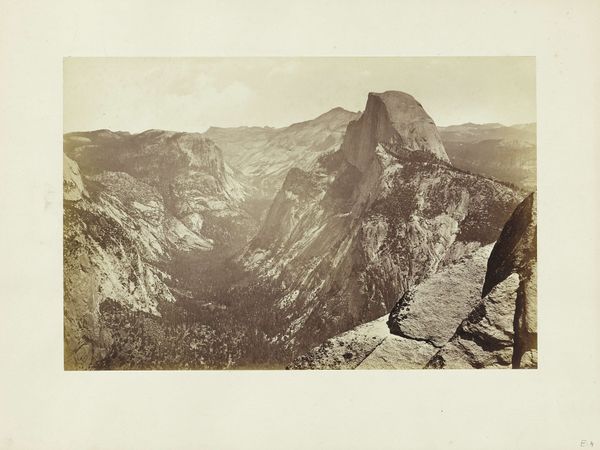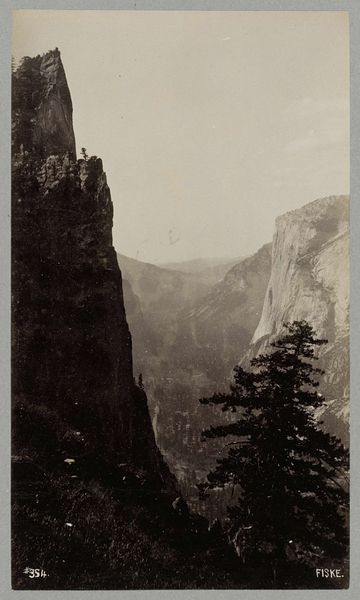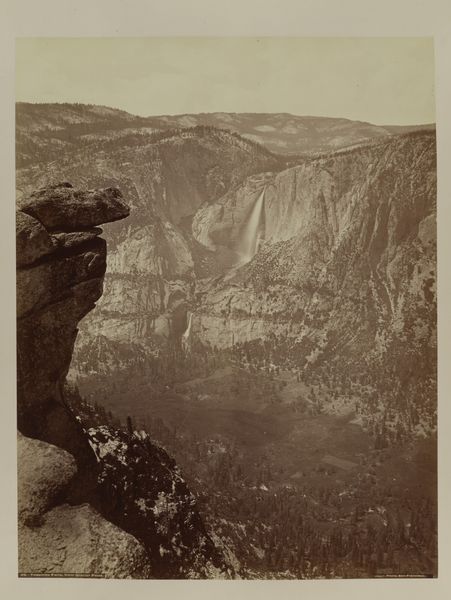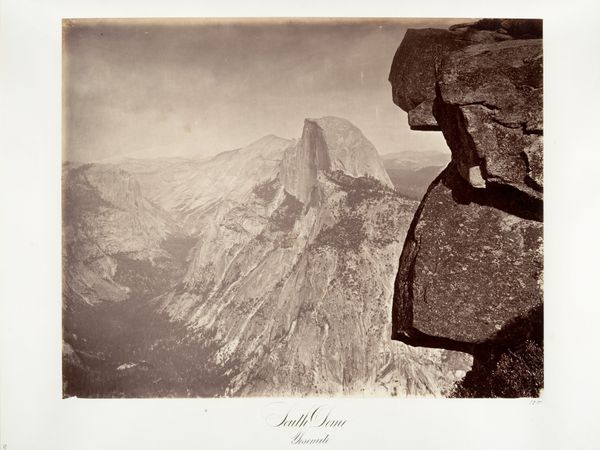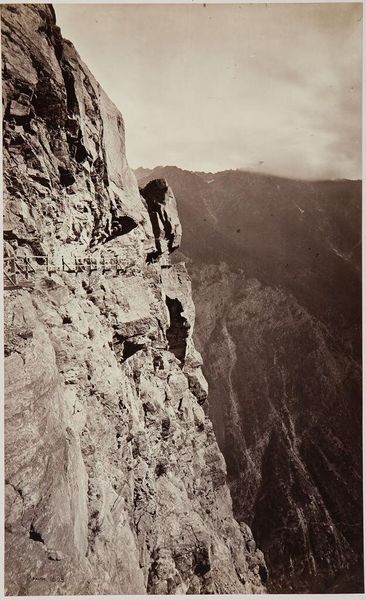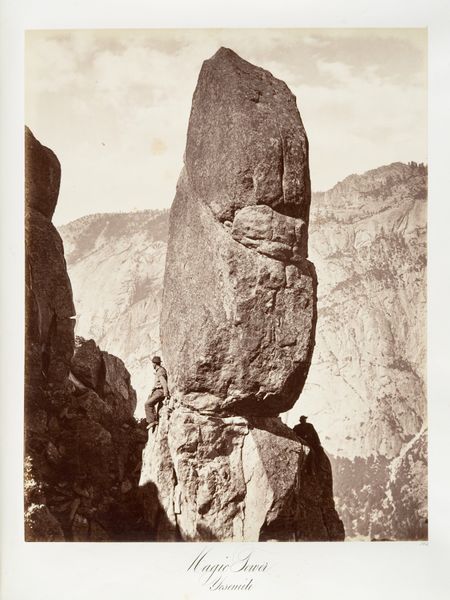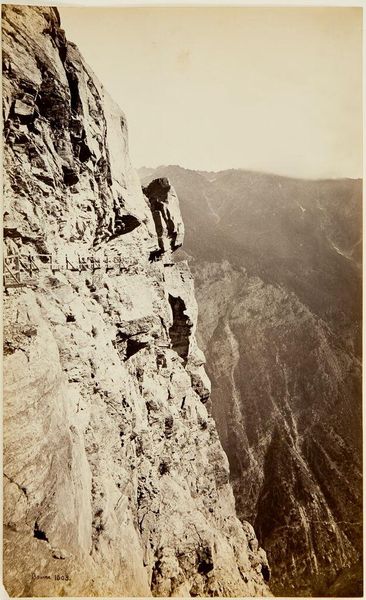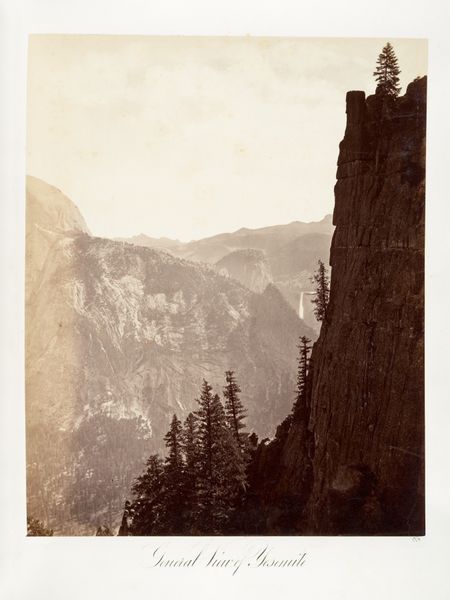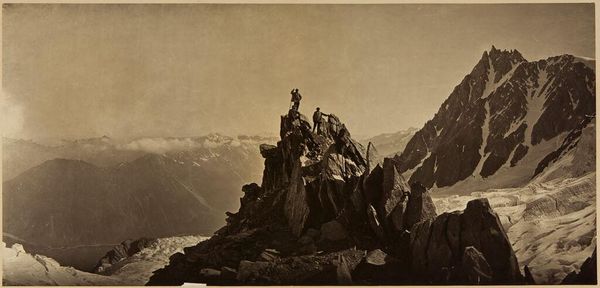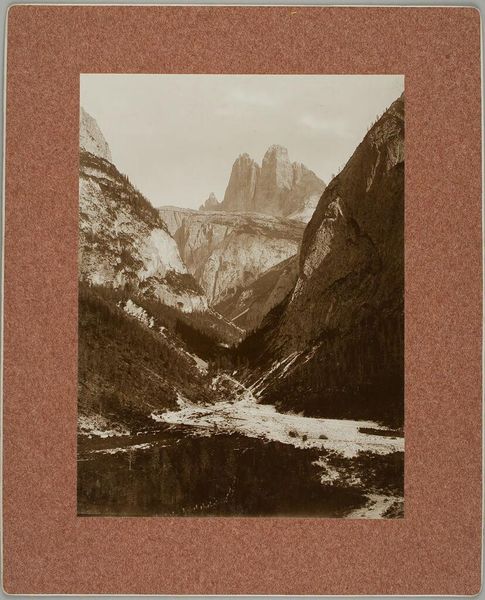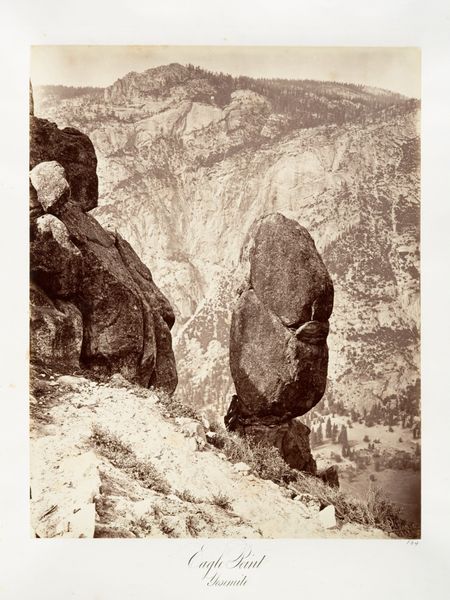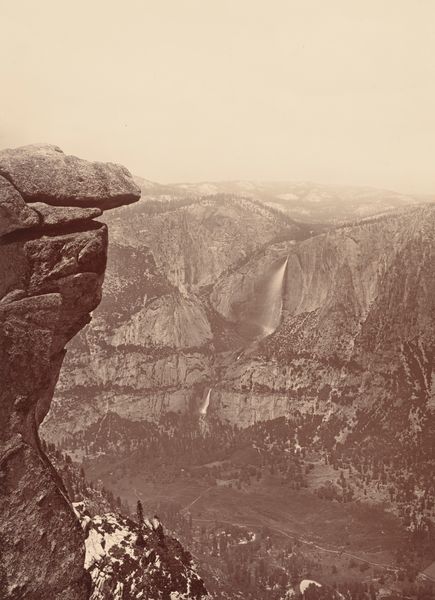
Dimensions: height 243 mm, width 197 mm
Copyright: Rijks Museum: Open Domain
Curator: Here we have Isaiah West Taber’s "Man on Glacier Point Rock in Yosemite Valley," a gelatin-silver print estimated to be from sometime between 1880 and 1900. Editor: What strikes me immediately is the almost precarious balance achieved in this composition, a delicate interplay between the small figure and the monumental landscape. The tones suggest both a sense of grandeur and a profound solitude. Curator: Indeed, the composition hinges on a dramatic contrast—the miniscule human form poised on the cliff against the sweeping vista of Yosemite Valley. Notice how Taber uses the textural richness of the rocks in the foreground to frame and enhance the depth of the landscape. Semiotically, the photograph employs sharp details in the foreground contrasting with softer, almost dreamlike, washes in the distance to signify, in visual language, the divide between what is at hand, the tangible, against the almost dreamlike distances. Editor: I read the placement of the figure more psychologically; it reminds me of Romantic ideals where individuals find themselves dwarfed and humbled by nature’s vastness. It’s the pictorial trope of facing something bigger than ourselves, prompting contemplation about mortality and place within the universe. In a broader sense, Glacier Point may also operate as a symbol of boundary, in that it demarcates how human consciousness perceives what can be understood and what can be forever mysterious to the mind. Curator: Interesting how you interpret the subject. But for me, the careful distribution of light across the composition is far more engaging. Notice how the play of light and shadow models the contours of the land. Structurally speaking, the high vantage point grants the photographer totalizing vision, allowing them to carefully orchestrate layers of forms which gradually diminish into background haze. Editor: All the same, to see a human figure on the cliff’s edge underscores themes prevalent in Romanticism. These vistas served as inspiration, a way to connect, yet in the sublime tradition the figure suggests simultaneous awe and terror. The symbols used aren’t just artistic; they are cultural memories ingrained deep within our collective unconscious, reflecting both human ambition and ultimate vulnerability. Curator: So it seems the essence of the work can be found in its formal architecture, whereas for you it lives within layers of cultural symbolism. Editor: Perhaps both perspectives allow one to see the value of the other; a complete synthesis can only be arrived at through sustained contemplation.
Comments
No comments
Be the first to comment and join the conversation on the ultimate creative platform.
